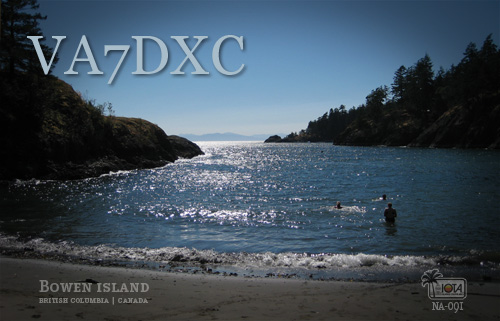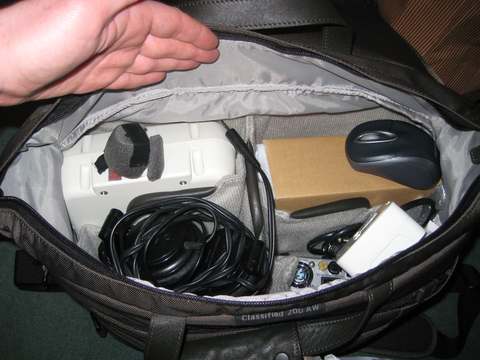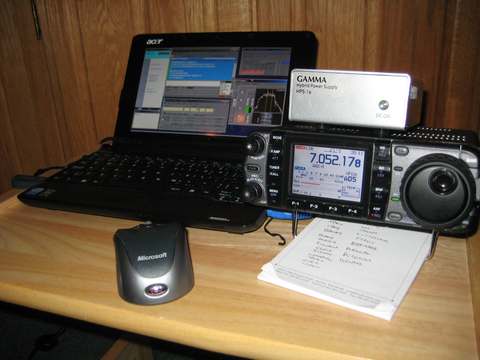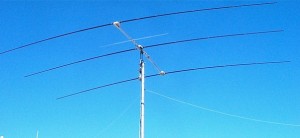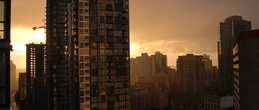This years Pacific Northwest DX Convention was held in Burnaby just outside of Vancouver, presenting a great opportunity to meet new people and hear some great ideas. The agenda was packed with a variety of talks and presentations spread over a weekend at the end of July. I had initially written a really, really long article on the Convention but felt I couldn’t do justice to each and every presentation so I’ve decided to give a brief overview on the presentations that really stood out to me.
Early on the Saturday morning after an interesting insight into the IARU, Karl KL9A, gave us his propagation predictions. I’m an avid reader of Karl’s column in the National Contest Journal (NCJ) and looked forward to his presentation here. Karl’s articles always strike a great balance between knowledgeable and lively writing and his presentation at the convention was no different. So what are those sunspots doing?
Well, they’ve been here long before civilisation and will probably outlast civilisation, there will always be sunspots, just not always in the numbers we would like! Not only is there the regular 11 year Schwabe ‘solar cycle’ but Karl also described the various other cycles of Hale, Gleissberg, Suess and Halstatt, showing solar activity patterns over hundreds and thousands of years.

Pacific Northwest DX Convention 2010 attendees
Predictions put Cycle 24 in the ‘weak’ category with a peak mean daily sunspot count of 90 in 2013. Considering that less than two years ago we regularly had 25 or more sunspotless days in a row, then I am not going to be complaining about a ‘weak’ daily mean of 90 sunspots!
In the afternnoon we had a standout show from Don VE6JY and Mitch VE6OH about Don’s superstation in Alberta. The guys really wowed the crowd with their tales of construction and destruction! With 27 towers on site, VE6JY’s antenna’s are subject to the harsh rigours of Canadian winters.
What impressed me the most about the VE6JY station were the multitude of monobanders all constructed on site. Other than the radios themselves everything at the station is either created or recycled from scrap and auctioned items, including their crane. Yes, to make servicing the 4 element 80m monobander that much easier Don purchased a wheeled crane at auction! You can read that great presentation here on his site.
The final presentation that afternoon came from Ward Silver, NØAX. Ward is a writer and regular contributor to QST and NCJ. He is also involved in editing the ARRL Handbook and also wrote the Ham Radio for Dummies book. His informative presentation not only covered issues relating to contesting but also education. In his role as educational writer, Ward was particularly interested in the challenges in writing for hams of varying technical abilities and backgrounds. He also hoped that advances in real time contest scoring would bring a new breed of younger hams to contesting.
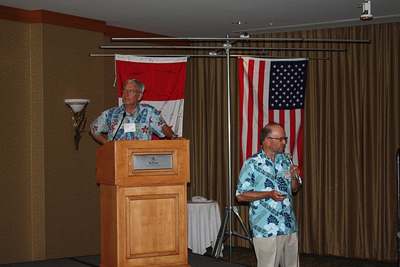
Bill N7OU and Bob W7YAQ discuss Tokelau
After dinner and a photo tour of ARRL HQ we had the presentation that I had been waiting all day for. Bill N7OU and Bob’s W7YAQ excellent adventure to Samoa and Tokelau. I won’t go into too much detail, as they’ve presented this trip numerous times and it also the subject of a great article in this month’s QST, however this DXpedition featured everything including remote atolls, tsunamis, ever friendly locals, cold beers and of course thousands of QSOs!
As I’ve said before I love the adventure that comes with small DXpeditions. There is a certain gung-ho attitude amongst dxers of this breed because compared to the big multinational dxpeditions these little adventures have less at stake. When things go wrong smaller dxpeditions are more flexible to change as was the case for Bill and Bob when they were stuck in Samoa for a number weeks. Of course smaller dxpeditions can’t get to the real hardcore DX entities, but with the smaller operations, getting to that remote island or atoll is more than half the adventure!
Other highlights from the convention included K7BV Dennis’ 6m adventure to San Andres Island and K9JF Jim’s travelogue about the ever popular Friedrichshafen hamfest in Germany.
As a newcomer to the hobby it was very enjoyable to meet in person all those ops I have worked numerous times in contests in the past year and half. At last I can put some faces and great personalities to those ever familiar callsigns. Conventions like these are a great reminder that the world of amateur radio doesn’t end outside our shack door.
